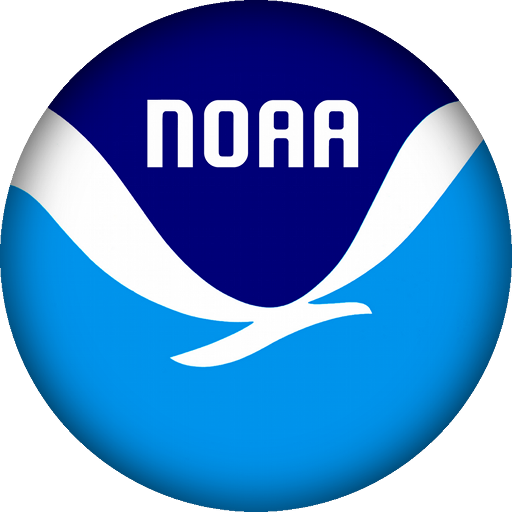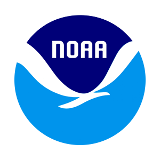| Home | | | Schedule | | | Local Info |
| Ship Automatic Identification System (AIS) for Everyone |
| Session Time | January 10th; 11:00 am to 12:30 pm | |||
| Location | Glen Echo | |||
| Description | The Automatic Identification System (AIS) is a system of shipboard transmitters and land-based and satellite-based
receivers that allow vessel locations to be broadcast and recorded. AIS is a critical part of ship-board navigation and
vessel traffic services (VTS) around the world. Increasingly, different groups are identifying ways to use AIS that
expand beyond the traditional usage in marine navigation. However, because these shipboard AIS transponders are
capable of transmitting updates as often as every two seconds, the generated datasets quickly become massive and
unwieldy, making data storage and access incredibly challenging.
A number of groups within NOAA (OCM, OCS, ONMS, NMFS, IOOS etc.), have requirements for AIS data. A recent informal survey found that many of these requirements are overlapping. While OCM in particular has made effort in deriving and sharing AIS products, there is still progress that can be made. This session would focus on different projects in NOAA that highlight the need for an enterprise tool for dealing with AIS data and explore potential solutions for dealing with this issue. The outcome would be a greater understanding of the different requirements for AIS data around NOAA and greater opportunities for interested groups to contribute towards the development of an enterprise solution. |
|||
| Chair | Lucy Hick | |||
| Presentations and Notes | Click Here! | |||
| Talk | Length (min) | Title | Presenter |
| 6B.1 | 15 | Helping the Coastal Management Community Access AIS | Daniel R Martin |
| 6B.2 | 15 | Using AIS to determine Hydrographic Survey Priorities | Lucy Hick |
| 6B.3 | 15 | Developing Scalable Data Management Solutions for Large Scale AIS data and Beyond | Rob Bochenek |
| 6B.4 | 45 | Open Discussion | |
| Abstracts | |||
| 6B.1 | Helping the Coastal Management Community Access AIS
Daniel R Martin (NOS/Office for Coastal Management - contractor) Anna Verrill |
||
| For Federal and state agencies to effectively manage human use of the coastal zone and the outer Continental Shelf they need to understand patterns of vessel traffic and the potential for location-based conflicts. The Marine Cadastre project, led by NOAA and BOEM, leverages the U.S. Coast Guard’s National Automatic Identification System (NAIS) to help NOAA constituents solve some of these needs. The expansive geographic scope of the NAIS, volume and frequency of record collection, changing carriage requirements, privacy concerns, and breadth of end user needs are just a few of the challenges the project team has managed over the past 6 years of operations. This presentation will share some of our lessons learned in designing data products and tools and serving countless customers. Some of our observations indicate a need to find a more scalable or enterprise design in order to meet the growing data science demands of our community. | |||
| 6B.2 | Using AIS to determine Hydrographic Survey Priorities
Lucy Hick (NOS/Office of Coast Survey) Corey Allen (NOAA), Christina Fandel (NOAA), Barry Gallagher (NOAA), Mike Gonsalves (NOAA), Patrick Keown (NOAA) |
||
| Vessel traffic, or Automated Information System (AIS) data is important for a number of initiatives within NOAA’s Office
of Coast Survey, including determining the adequacy of navigational charts and prioritizing the acquisition of
hydrographic data. In particular, AIS is one of the main parameters for Coast Survey’s new Hydrographic Health
model.
Coast Survey has amassed several years’ worth of AIS data (both satellite and terrestrial) for the entire United States. AIS data is also available from MarineCadastre.gov. However, due to immense size of these datasets and limitation in our infrastructure and computing power, AIS data must currently be processed in small temporal or spatial subsets. This has proven inadequate for the Hydro Health Model, which requires analysis of the entire AIS national data over an entire year. In order to resolve these issues, Coast Survey has partnered with Axiom Data Science and the U.S. Integrated Ocean Observing System (IOOS) to develop a system which allows easy interaction with AIS data. This talk will highlight how AIS is being used to determine NOAA's hydrographic survey priorities, some of the issues that have been encountered trying to work with AIS, and progress that has been made on the development of new tools and methods. |
|||
| 6B.3 | Developing Scalable Data Management Solutions for Large Scale AIS data and Beyond
Rob Bochenek (Axiom Data Science LLC/Partner with NOS/OCS) |
||
| This talk will present progress on an a NOAA funded effort to develop the capability to significantly reduce the execution time for handling and analyzing extremely large collections of Automated Information System (AIS) vessel tracking data. This capability is enabling the investigating team to produce a variety of analytical products that serve as primary inputs for NOAA’s OCS Hydrographic Health Model which identifies areas that may provide a risk to surface navigation due to inaccurate depths or unknown hazards. In addition, this capability provides a framework for ad hoc querying and granular processing of the underlying AIS dataset. Utilizing and optimizing a high performance computing, parallel compute workflow solved current data volume challenges experienced by traditional database and single node computing systems. To overcome the limitations of traditional data storage and processing infrastructure, we propose the assembly and use of a cluster computing stack using Apache Spark as the computing engine. This stack is horizontally scalable, high-availability, and built upon a suite of high-performance open-source technologies to provide a general processing engine for a wide variety of high volume datasets. | |||
| Top of the Page |


